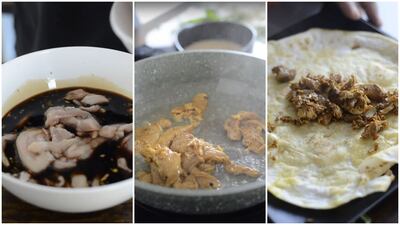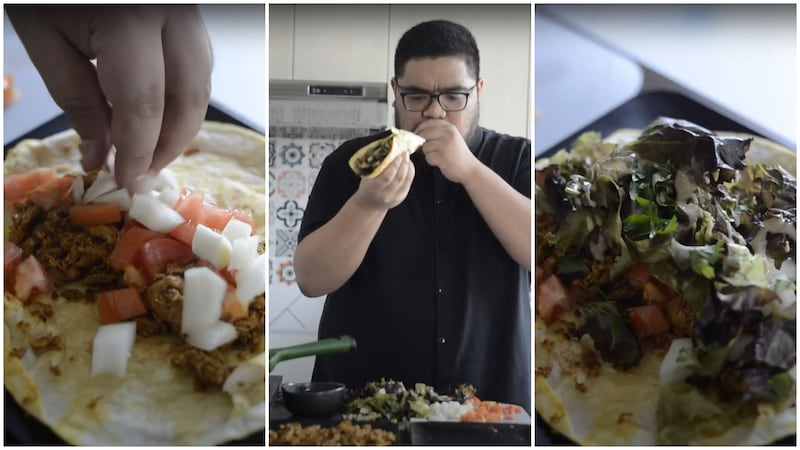Generative artificial intelligence is a gift that keeps on giving.
When it first exploded into the mainstream in the form of Open AI's ChatGPT, the world was in awe of its seemingly infinite ability to quickly generate content.
Everyone was using it – teachers and their students, employees and their bosses, writers (or should I not admit that?) – excited by the promise of a software that, on the surface, would make their lives so much easier.
The generative AI bandwagon continued with the release of similar technology, such as Google's Bard, which is available in Arabic, Korean and Hindi among dozens of languages other than English.
Part of what made ChatGPT take off was people's imagination and creativity.
Yes, it is able to string cohesive sentences about the Great Depression's impact on modern society, every bit as well as it can reel off Meryl Streep's filmography and discuss its relevance in Hollywood – but can it actually enhance the average person's day-to-day life? For example, could a decision as subjective as what we have for lunch each day become directed by AI?
After trying it myself, the short is answer yes. I'm certainly not the first person to put ChatGPT to the culinary test, but as someone who loves to cook and eat, the ways that AI can assist me in the kitchen are exciting – even if it's not in the hard labour of manually whisking eggs or folding dumplings.
For my experiment, I asked the OpenAI software to create a recipe that combines Filipino and Middle Eastern cuisines, and in seconds, it came up with an adobo-marinated chicken shawarma, served folded in a tortilla like a taco.
Although it's impressive, I must say it's pretty predictable. Adobo is probably the most famous Filipino dish, and shawarma holds the same prominence in Middle Eastern cuisine. I have, obviously, tried both as separate dishes, but not as a fusion. I vowed to see the experiment through, so I dusted off my grocery bag and started gathering the ingredients with juvenile excitement.
The cooking

Reading through the ChatGPT-generated recipe, it was making sense. Both the adobo and shawarma aspects of the dish are prepared separately. In one bowl, the thinly sliced chicken is first marinated in adobo sauce, before it is transferred to another bowl with the shawarma seasoning.
My first impression was that it was going to be painfully punchy. The adobo marinade is made of soy sauce, vinegar, ginger and garlic, while the shawarma seasoning calls for cumin, coriander, paprika, turmeric, cinnamon and cayenne pepper – basically an explosion of spices, made even heavier by the salty soy sauce.
But I had vowed to stick to the AI recipe to the gram.
As soon as the drenched chicken meat hit the searing pan, my kitchen was immediately engulfed in a cacophony of fragrant spices. The vibrant hue of the turmeric coated the meat, and I waited until it was “fully cooked and slightly crispy on the edges,” as per my ChatGPT recipe.
The dish could be served on a flour tortilla, or in pitta bread with chopped lettuce, diced tomatoes, sliced onions and chopped parsley, drizzled with a store-bought tahini sauce. At this point, my mouth was watering, and I couldn't wait to bite into the AI-generated fusion.
As expected, the adobo shawarma had a strong flavour. It almost tasted as if the adobo marinade and the shawarma spices did not completely fuse, creating a rather reckless saltiness – like someone just mindlessly threw spices together and added cups of sodium-heavy soy sauce, while the acidity of the vinegar, which is a major component of adobo, was almost absent.
The second bite was better, once my buds acclimatised to the vigour of the spices. I added more tahini sauce, and capitalised more on the fresh ingredients of the taco.
Key takeaways
Conceptually, an adobo shawarma is a decent fusion idea. Both dishes are emblematic of their cuisine origins, and the recipe made some sense on paper.
But this is also the issue – if cooking were purely science, maybe following recipes inferred by AI from millions of data sets online would be the perfect way to create a dish. I believe it isn't.
What I love most about cooking is the artful cadence it requires, and the flexibility of adjusting ingredients to taste. This is not to say that AI has no place in the kitchen. For amateur cooks like me, it provides a decent vantage point, but never a replacement to the creative improvisation that cooking often calls for.
For the adobo shawarma dish, I would have adjusted the amount of spices and made the adobo marinade ingredients “pop” more. I would have replaced vinegar with lemon or lime juice, and let the chicken sit longer in the sauce, preferably from six hours up to a day.
Before seasoning the marinated chicken with shawarma spices, I would have lightly sautéed it in the adobo sauce, with the addition of chicken stock and a few more garlic cloves to lock in the Filipino flavour.
In the end, I think generative AI can be helpful in conceptualising recipes, but that's about it – it can never replace the heart and soul of cooking a dish, and hoping the spontaneity pays off.






